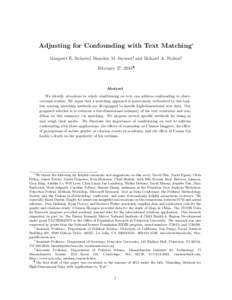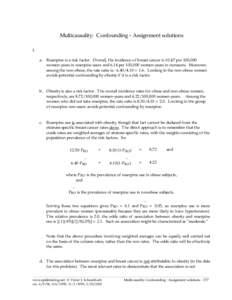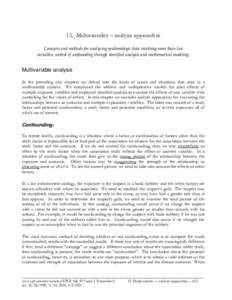<--- Back to Details
| First Page | Document Content | |
|---|---|---|
 Date: 2018-02-27 08:48:12Design of experiments Causal inference Observational study Metaphysics Statistics Estimation theory Probability and statistics Regression analysis Propensity score matching Matching Confounding Average treatment effect |
Add to Reading List |
 Adjusting for Confounding with Text Matching∗ Margaret E. Roberts†, Brandon M. Stewart‡, and Richard A. Nielsen§ February 27, 2018¶ Abstract We identify situations in which conditioning on text can address confou
Adjusting for Confounding with Text Matching∗ Margaret E. Roberts†, Brandon M. Stewart‡, and Richard A. Nielsen§ February 27, 2018¶ Abstract We identify situations in which conditioning on text can address confou


